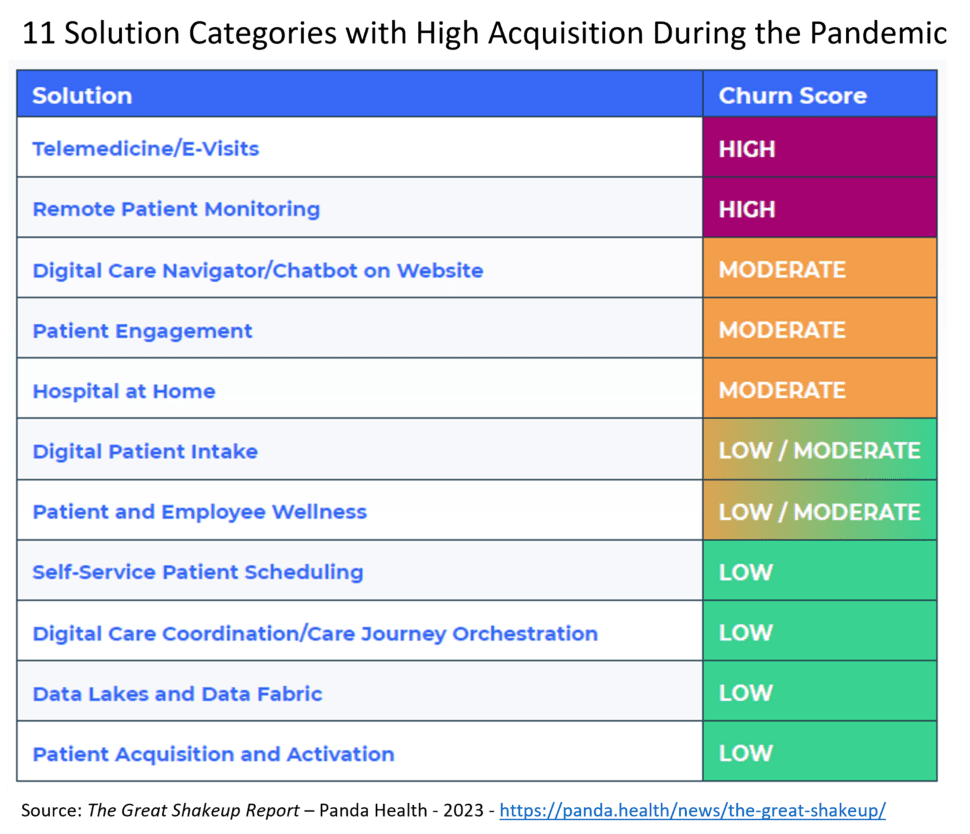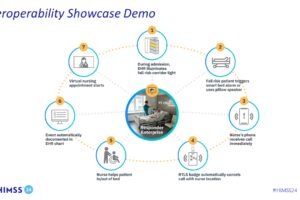During the COVID-19 pandemic, dozens of technologies were rapidly acquired and deployed by healthcare organizations like telehealth, remote patient monitoring and digital patient intake. According to a new report from Panda Health, now that the pandemic has subsided, organizations are revisiting those purchase decisions. Seven solution categories were identified as likely to experience moderate to high levels of churn in the next two years.
Healthcare IT Today sat down with Ryan Bengtson, President and COO at Panda Health to dive deeper in to their Great Shakeup Report.
Pandemic Drove Rapid Health IT Adoption
According to Bengtson, healthcare organizations were rushed into deploying Health IT solutions to meet their needs during the pandemic. Most organizations did not have the time or resources to do the appropriate level of process redesign, change management or technical integration that they would typically do when adopting these types of solutions.
“Some may now feel that they chose the wrong solution in a hurried fashion and may reconsider their choice as those contracts expire,” explained Bengtson. “In other cases, they may feel they chose the right solution, but did not necessarily deploy it in the best manner. Those organizations can now go back and make adjustments.”
High Churn Expected
The Great Shakeup Report identified eleven solution categories that experienced a high level of acquisition during the pandemic. Of those, seven categories are now expected to see moderate to high levels of churn over the next two years.

The churn index reflects the level of satisfaction/dissatisfaction with solutions in this category AND when contracts are expected to renew.
According to the report, 1600+ hospitals could potentially change their telehealth solution between now and 2024. Bengtson believes that part of the reason this number is so high is because many organizations ended up implementing multiple telehealth solutions.
“During the pandemic, different departments went with different telehealth solutions,” said Bengtson. “For example, the provider practices may have chosen something different than the inpatient areas. What may be reflected in the report is the rationalization of these solutions – going down from seven to just one or two.”
Vendors Should Step Up Client Service Efforts
The report suggests that vendors should step up their client service efforts to ensure:
- Their solution is deployed well;
- Tightly integrated into their customer’s technology environment and workflows;
- Users are happy with the solution and the results.
“Being an incumbent may not be as much of an advantage as it once was,” concluded Bengston.
Watch the interview with Ryan Bengtson to learn:
- The surprising correlation between satisfaction and renewal timeframes
- The two results from the report that surprised Bengtson
- What the next 12-24 months may look like for vendors and healthcare organizations
Learn more about Panda Health at https://panda.health/
Listen and subscribe to the Healthcare IT Today Interviews Podcast to hear all the latest insights from experts in healthcare IT.
And for an exclusive look at our top stories, subscribe to our newsletter.
Tell us what you think. Contact us here or on Twitter at @hcitoday. And if you’re interested in advertising with us, check out our various advertising packages and request our Media Kit.













